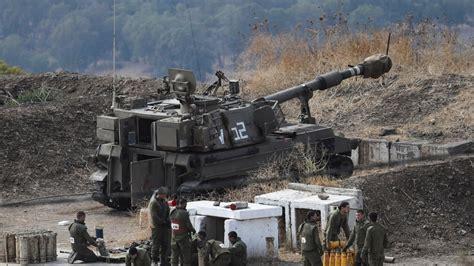
Hezbollah rocket fire continues as US, French diplomats arrive in region
Israel’s Defense Minister Yoav Gallant warned Hezbollah about further escalation along Israel’s northern border on February 4 during his visit to the Tel Nof airbase in central Israel. “Each attack in Lebanon advances us in changing the security situation on the northern border,” he said, adding that Israel’s aircraft are pointed north. “We still haven’t used all our special capabilities,” Gallant said.
His statement underlines continuing — and growing — concern about the Hezbollah threat as well as Israel’s determination to change the subsequent security situation in its north.
The warnings came a day after Israel Defense Forces spokesperson Rear Admiral Daniel Hagari gave a briefing that detailed the IDF’s efforts against Hezbollah over the last four months. Hezbollah began attacks on Israel on October 8, one day after the massive Hamas attack in southern Israel.
Hezbollah has launched more than 2,000 rockets into Israeli airspace in addition to sending in numerous drones and firing anti-tank guided missiles at Israeli border communities. More than 400 homes have been damaged with more than a dozen soldiers and several civilians killed.
The IDF says it has eliminated 200 Hezbollah terrorists and struck 3,400 Hezbollah sites in Lebanon, destroying command centers, weapons stashes and other threats. The large number of targets has not reduced the rocket fire from Lebanon. On February 4, there were numerous rockets launched against communities all along the northern border.
The IDF said on February 5 that there were additional attacks: “throughout the day, numerous launches were identified crossing from Lebanon into northern Israel. IDF soldiers struck the sources of the launches as well as in additional areas in Lebanon.” The IDF used artillery to strike at a Hezbollah “military site” and another “command center” as well as other “military compounds.” The IDF continues to note that “Hezbollah’s ongoing terrorist activity and attacks against Israel violate UN Security Council Resolution 1701. The IDF will continue to defend Israel’s borders from any threat.”
I drove along Israel’s northern border with Lebanon on February 5 to get a sense of the ongoing security threat. Most Israeli communities along the border were evacuated in October, sending some 80,000 civilians to live in hotels or other communities. Some members of these communities pay regular visits to their homes for general security checks and to tend to farming or other business-related needs. Although there was rocket fire in the morning near the coastal city of Nahariya as well as in the areas of Avivim and Yiron on the border — near where I was – there was no sense of heightened tension. This is likely due to Israel’s preparations along the border over the last several months.
An IDF spokesperson, for example, noted on February 3 that the IDF has three divisions deployed in the north. The IDF has conducted extensive training with these units in the north as well, concentrating on many of the reserve brigades that were called up after October 7.
During his February 5 visit to Jerusalem, French Foreign Minister Stéphane Séjourné condemned the October 7 Hamas attack, noting that 42 French nationals had been killed with three French citizens still being held in Gaza.
The Minister’s trip to the region will also include a stop in Lebanon.
US Special Envoy Amos Hochstein was in Israel on February 4 to discuss tensions on Israel’s northern border as well as Israel’s demands that Hezbollah remove its forces from the border area.
US Secretary of State Antony Blinken also arrived in the region on February 5, underscoring the US and West’s growing concern over the potential for Israel’s defensive war to erupt into a wider war in the region.
Source » longwarjournal.org





